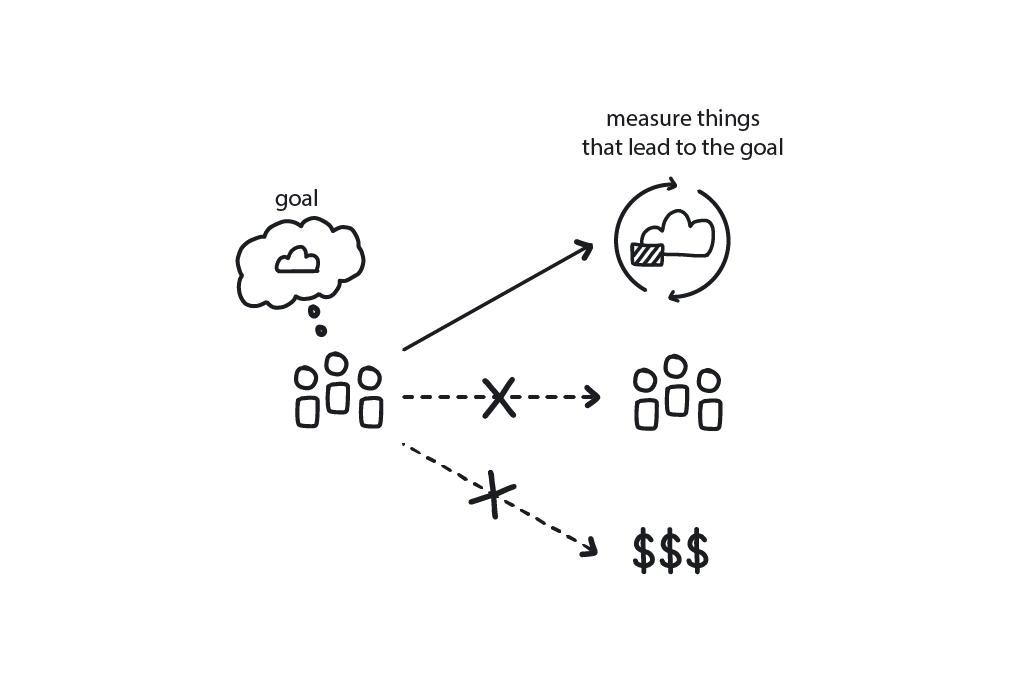Pattern: Measure What Matters
People optimize their actions based on how their work is measured. Assessing the wrong things leads people to optimize for the wrong goals
The company has strategic and tactical goals, and the management team wants to establish company performance metrics to measure and monitor progress.
In This Context
People tend to optimize their work output based on what is measured. Incorrect measurements will result in flawed deliveries (delivering the wrong things) and suboptimal performance.For example, measuring velocity in Scrum will lead to inflation of story points. If the key performance indicator (KPI) doesn’t reflect the company’s actual needs, the result will be poor. This is an example of Goodhart’s law, which states “When a measure becomes a target, it ceases to be a good measure.” What happens is that which this can occur is individuals trying to anticipate the effect of a policy and then taking actions that alter its outcome.
- People tend to optimize for best measurements.
- Most methodologies bring their own metrics.
- Different teams may have different goals.
Therefore
Always adjust performance measurements to fit the organization’s strategic and tactical needs. Keep measuring the most important KPI and stop when specific behavior becomes routine. Only measure a few KPIs at a time, choosing ones related to the current worst bottlenecks. Prioritizing customer value as the main metric helps to focus on customer needs.
- Keep KPIs measurable and achievable but also stretched for delivery progress.
- Measure differently for creativity versus proficiency.
- Avoid getting stuck in vanity metrics like number of site visitors and focus on measuring customer value.
Consequently
Managers set up KPIs in conjunction with goals and adjust them as the goals are changing.
- Higher awareness from all involved.
- All stakeholders have more clarity about priorities and goals.
- It is difficult—and confusing to the teams—if metrics change frequently.
